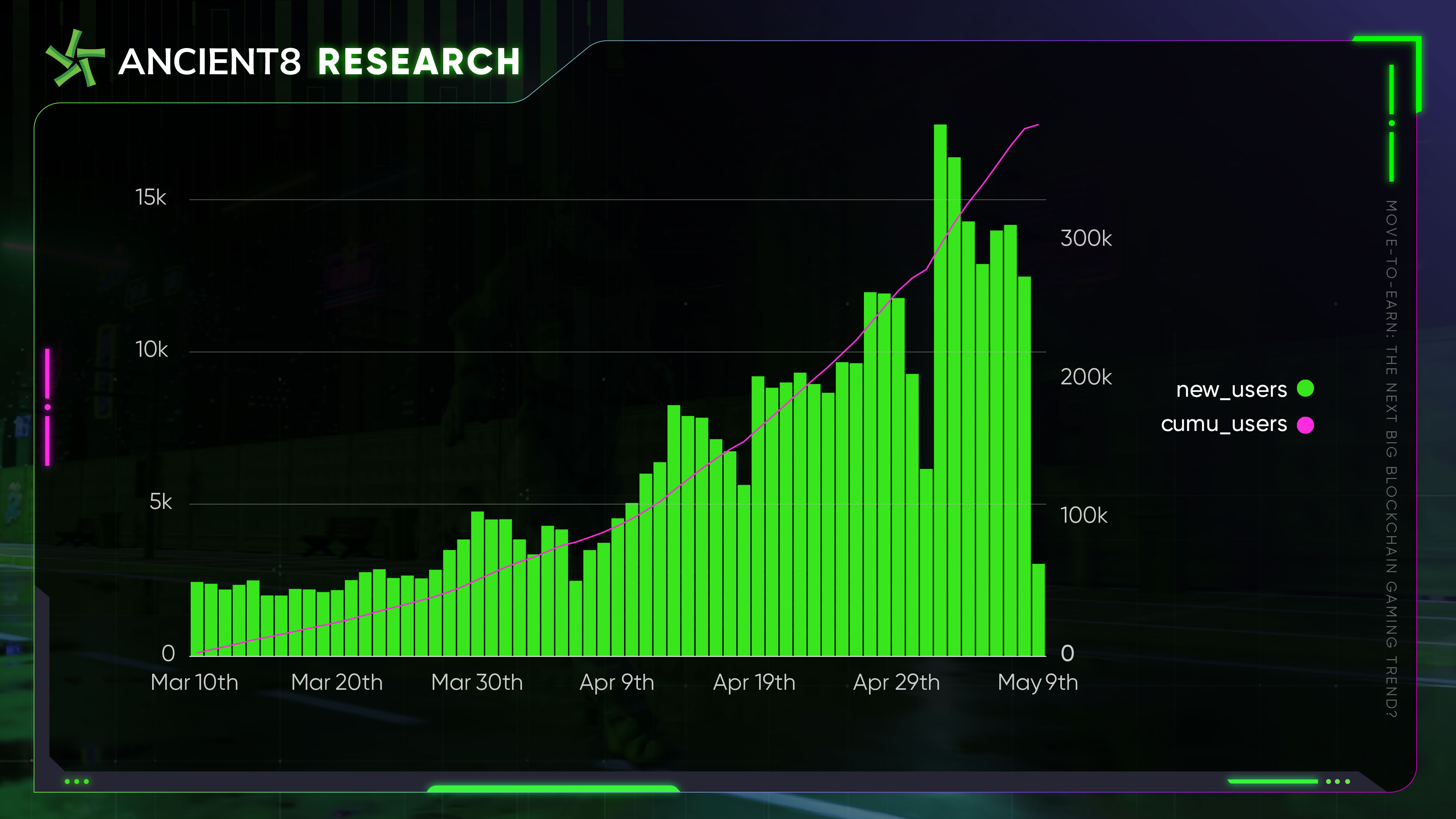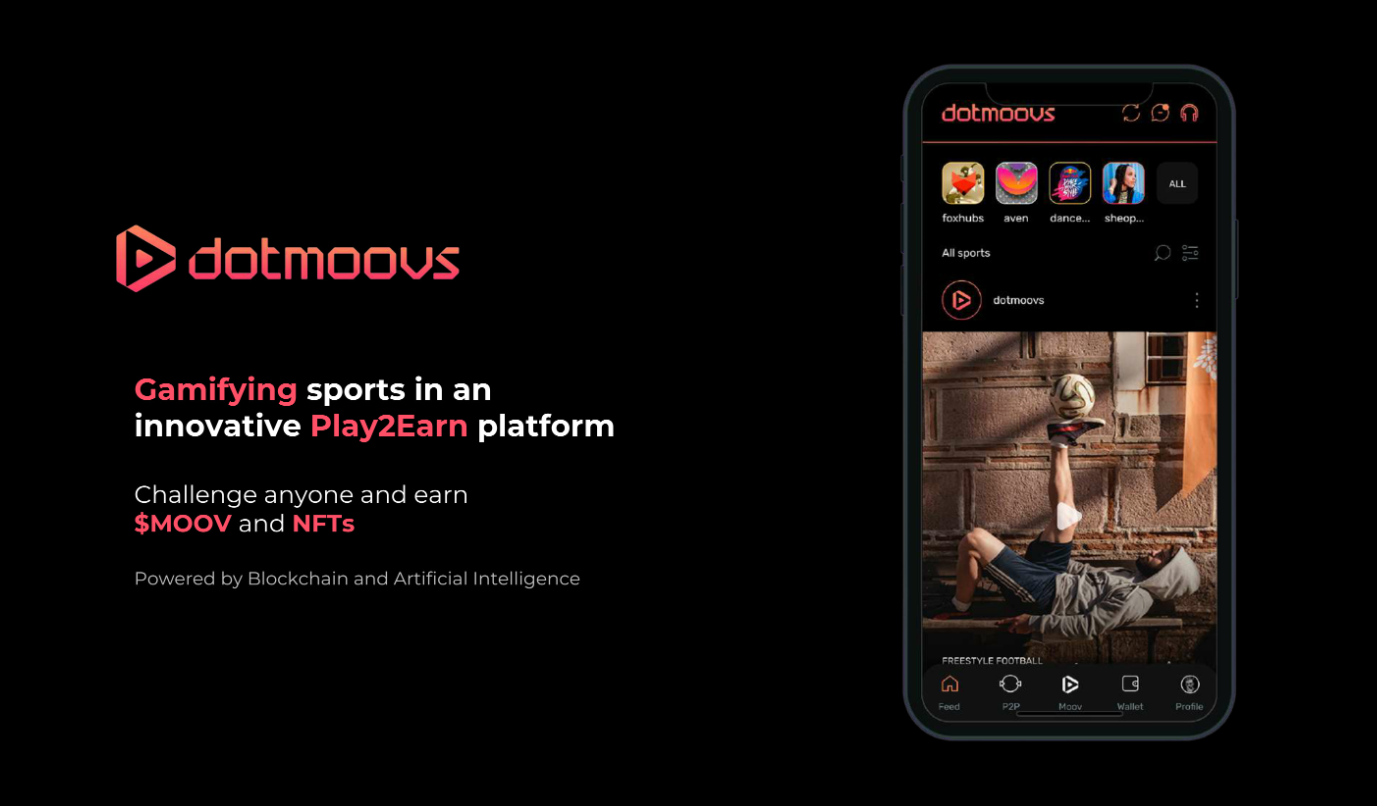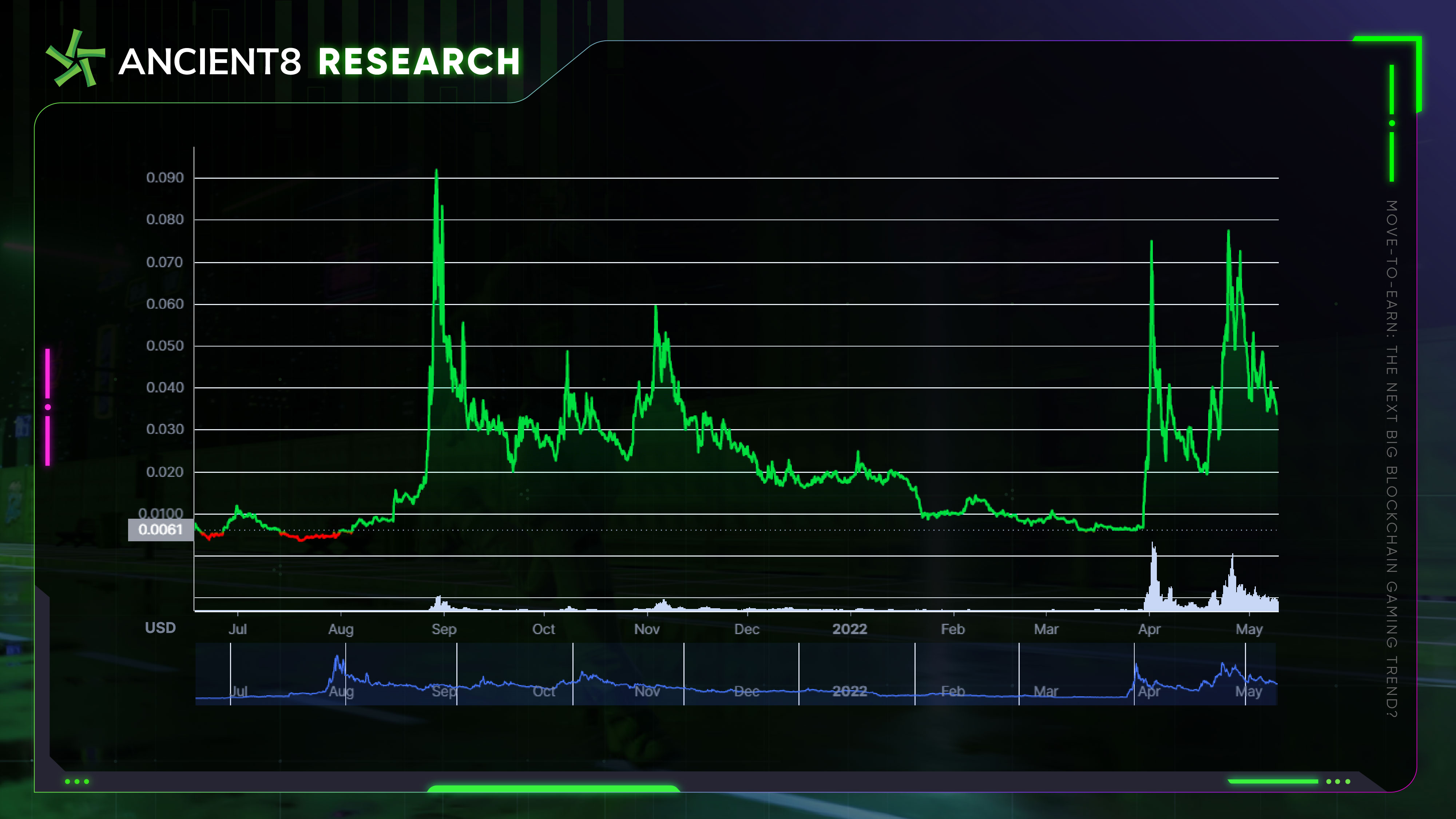DISCLAIMER THIS CONTENT IS FOR INFORMATIONAL PURPOSES ONLY. IT IS NOT A RECOMMENDATION TO PURCHASE TOKENS OR ANY OTHER ASSETS. ANY INVESTMENTS MADE IN THE PROJECTS OR ASSETS MENTIONED BELOW ARE DONE SO AT YOUR OWN RISK. THIS IS NOT FINANCIAL ADVICE.
The Inspiration
6 years ago, Pokémon GO took the world by storm. The free-to-play, location-based, augmented reality mobile game was released on July 6, 2016, celebrating 20 years of the Pokémon brand. The game uses a smartphone’s GPS and camera to geospatially overlay Pokémon onto the real world and enables players to “catch” them. Less than a month after its release, Pokémon GO had become the most successful mobile game in history, breaking records for most-downloaded and fastest to earn $100 million. To date, it has generated over $4 billion in revenue and has been downloaded nearly 600 million times.

Figure 1: Pokémon GO annual revenue from 2016 to 2021 (Source: Statista)
Pokémon GO’s global popularity can be attributed in part to the ways that it blends the real and digital worlds and encourages physical activity. In one study, the number of participants who made >10,000 steps a day increased from 15.3% before to 27.5% after playing Pokémon GO. Another showed that playing Pokémon GO raised moderately to vigorous physical activity by about 50 minutes per week and reduced sedentary behavior by 30 minutes a day. This all amounts to a significant impact on people’s fitness and health, illustrated in this study that shows the game added 144 billion steps to US activity, while dedicated players increased their average daily number of steps by over 25%.
6 years later, a new branch of NFT games has captured the attention of the crypto world called Move-to-Earn. Like Pokémon GO, Move-to-Earn uses a move-to-play model that requires players to participate in outdoor physical activities, with the benefit of allowing players to earn rewards.
Move-to-Earn Concept
Move-to-Earn (M2E) (aka “FitFi”) is an ideal combination of GameFi and Fitness Apps that incentivizes a more healthy, active lifestyle with token rewards.
STEPN, a Web3 lifestyle app launched in late December 2021, has kicked off the recent surge in FitFi’s popularity. This model has since been adopted by a variety of other apps that utilize geolocation data, physical sensors, augmented reality, non-fungible tokens (NFTs), and other existing blockchain technologies in order to gamify fitness using blockchain technology.

Figure 2: STEPN, a Web3 lifestyle Move-to-Earn
Leveraging the utility of crypto and NFTs, Move-to-Earn applications allow users to earn a reward for participating in regular exercise activities or fitness-related challenges. Tokens earned from Move-to-Earn can be used in the game world or exchanged for crypto or fiat money following their own terms for profits.
Coming off the Play-to-Earn trend, the number of Move-to-Earn games has grown considerably in the last four months. Most are still relatively obscure, but some have already achieved considerable success such as STEPN, Genopets, and dotmoovs. Not only does M2E encourage a more active lifestyle, but it also has numerous potential applications for Augmented Reality (AR) and Virtual Reality (VR) technologies, promoting further development of metaverse and blockchain technology.
Move-to-Earn vs. Play-to-Earn
Move-to-Earn combines GameFi and SocialFi and is an offshoot of the Play-to-Earn model. In Play-to-Earn games, players earn tokens for winning battles, progressing through levels, and exploring the game world. Move-to-Earn apps, on the other hand, use the sensors in player’s mobile devices to detect their movements and reward them for physical activity. In other words, Move-to-Earn gamifies fitness using digital assets with the goal of incentivizing healthier lifestyles. It seeks to capitalize on the popularity of personal fitness trackers and workplace wellness programs. By encouraging a healthier lifestyle, Move-to-Earn has the potential to reduce medical and insurance costs and sick leave. The added benefits of Move-to-Earn apps appeal to new, more health-conscious demographics than Play-to-Earn games.
Prominent Move-to-Earn Projects
Genopets
The first game to introduce the concept of Move-to-Earn was Genopets. Genopets is a free-to-play NFT game with progressive gameplay mechanics built on the Solana blockchain. Players raise and evolve digital pets to train and fight, with similar elements to Tamagotchi, Pokémon, and Animal Crossing. Genopets tracks their players’ real-life activities using apps on their mobile devices and rewards them with XP points to nurture and upgrade their Genopets. Genopets can be bought, sold, and traded, and the earnings potential scales with a pet’s level. Players can also use their pets to complete quests and earn rewards in the Neon Genoverse.
Genopets has successfully raised $8.3 million in its seed round from many of the biggest venture capital funds seeking to replicate the success of Pokémon GO and bridge the physical and digital worlds with a Move-to-Earn mobile game.

Figure 3: Genopets, the world's first Move-to-Earn game
What makes Genopets stand out is that it’s free to play. Minting a Genopet is free, so there are no upfront costs required to participate in the game and earn revenue. However, players can opt to purchase habitats and additional NFTs to boost their performance and progress.
Although Genopets is still in its early stages of adoption, its user-engagement growth model and potential appeal to non-crypto audiences are unique. Riding the Move-to-Earn trend, Genopets should continue to grow steadily as long as it keeps expanding the gameplay and rewarding users for their participation.
The game is currently still in its private beta and has experienced a flood of interest from the community; it boasts an impressive 166K Twitter followers and 156K Discord members. The next key milestone for the project is their Habitat launch.
By combining the proven models of free-to-play mobile gaming and P2E/M2E NFT gaming, Genopets harnesses the best of both worlds with long-term potential. We can definitely see the project sparking a new trend of similar hybrid titles.

Figure 4: Genopets Economy
Despite being one of the first M2E games in space, Genopets was not able to reach the masses until STEPN came along.
STEPN
Launched in December 2021, STEPN connects users’ running routines with the blockchain through NFT sneakers. To participate, players must buy a sneaker that matches their average running speed and fitness level and use geolocation to track their running outdoors. By keeping a consistent pace within the optimal speed range displayed onscreen, the player earns crypto rewards from running. The network also features a leaderboard, encouraging friendly competition and adding another layer of incentives.
Despite being one of the newest FitFi projects, STEPN has achieved great popularity in the crypto space with parabolic growth. STEPN’s $GMT token price increased almost 2,500% from its launch to its all-time high on April 28. This has rocketed the project’s market capitalization to over $2 billion, making it one of the largest cryptocurrencies in the world right now. Furthermore, the trading volume of $GMT reached $1,356,023,856 — a 129% increase from $591,561,348, when it launched.

Figure 5: GMT monthly price (CoinMarketCap)
STEPN has attracted over 368,639 users over its lifetime with consistent volume. In the last seven days, more than 78,066 new sneakers have been minted.

Figure 6: STEPN cumulative users (Dune Analytics)
The game is becoming a global sensation, but starting a Move-to-Earn adventure with STEPN is not cheap. A basic NFT sneaker costs roughly 12 SOL worth around $840 at the current price. To manage the overwhelming demand, new users also need an activation code, which limits the number of registrations per day. Users can get a code from another player or try to use the ones distributed daily by the developers— But they have to be quick, as the codes get immediately used.
Embracing ESG and environmentalism, STEPN is also the first Move-to-Earn project to work towards achieving Carbon Neutrality by purchasing Carbon Removal Credits on the blockchain.
On May 4, STEPN announced that the number of daily active users of the game have reached 533,000, the weekly active users have exceeded 1.1 million, and the monthly active users have surpassed 2.3 million. With this impressive performance, STEPN is moving ever closer to fulfilling its mission - onboarding the most diverse group of consumers that web3 has ever seen and making a positive impact on the health of millions of people around the world.

Figure 7: STEPN's user activity over time
dotmoovs
Backed by Moonrock Capital and Morningstar Ventures, dotmoovs is a sports mining and mobile competition platform built on the Ethereum network. It challenges the way people think about athletic performance by providing AI-driven video referees and fraud detection algorithms to monitor practice sessions and oversee challenges between users. dotmoovs enables users to record their activities and compete with other people around the world in various sports like football or dancing to earn MOOV token rewards. Fairness is ensured by a cutting-edge AI engine, which gives confidence to participants by prohibiting cheating.

Figure 8: dotmoovs - the first crypto mobile worldwide competitive environment
dotmoovs solves the restrictions of traditional sports by allowing anyone in the world to compete in a digital arena free from the constraints of currency value, geographic limitations, and the lack of skill assessment opportunities. Last year, dotmoovs introduced an NFT renting feature based on a profit-sharing model which enables users to participate in the game without having to buy an NFT from the start. At the end of March, the project announced that it would integrate the Dance feature in its mobile app with some new challenges like the Maradona Legendary Challenge around the upcoming International Dance Day. The announcement made its $MOOV token soar for an overall gain of 1,500% since its launch, making it a top-performer at the time. With a current market cap of $24.1 million, dotmoovs is still highly undervalued. Other features will be dropping in the coming months, including AI Anticheat, additional arbitration engine tests, and new sports scenarios and A/B testing for the scoring algorithm, and we expect the $MOOV price to see further gains on this news.

Figure 9: MOOV monthly price action (CoinMarketCap)
What is the hype around Move-to-Earn?
Easy to play: One of the reasons behind M2E’s popularity is that the games are easy to play. Rather than spending time and effort strategizing and battling in P2E games, Move-to-Earn games reward activities that many people already do. This means there is practically no learning curve for players to overcome before they can effectively play and earn. It also doesn’t require expensive equipment— just a smartphone with a camera and GPS. Users simply open the app and start moving and earning!
Interactive technology: As GameFi drives the future of the metaverse, more and more projects will integrate AR and VR technology to bridge the gap between the digital and physical worlds. M2E games have successfully begun to integrate augmented reality and it may become the main feature of these games in the future. In the future, Move-to-Earn could apply other technologies like portable consoles or other types of activity monitors to track not only running and sports, but other exercises like lifting to support a more holistic fitness program.
Achievements: Achievement and motivation go hand-in-hand. People need to feel motivated in order to act, and motivation is boosted by achievements. The most fundamental motivators of Move-to-Earn are health improvement, social signaling, and financial reward.
Exercise: Since the start of the Covid-19 pandemic, It has been clear that having good physical health helps prevent the most severe symptoms of Covid. It makes perfect sense that, according to the Les Mills 2021 Global Fitness Report, the appetite for live fitness experiences is soaring as we emerge from pandemic lockdowns. The study found that 82% of participants now regularly exercise (or would like to) and 27% of the fitness market describe themselves as ‘absolute beginners’. Move-to-Earn offers additional incentives for people to improve their physical fitness. It’s well documented that exercise has a positive effect on both the mind and body, and that many people find it highly addictive. What better way of making money? It's a win-win for users.
Integrating fitness apps: Fitness apps are addictive. They can keep track of users’ daily steps, calories burned, heart rate, sleep, and more. They are a convenient and fun way to motivate people to hit their exercise goals and challenge their workout buddies. M2E seeks to add a financial layer and further gamification to social fitness apps. For example, Genopets has integrated Google Fit and Apple Health, while Wirtual has integrated Strava, Fitbit or Garmin to track users’ exercise.
Social element: After the pandemic, people desire to socialize and find new hobbies to get obsessed with more than ever. Move-to-Earn apps encourage users to interact with others who share their passion for exercise by allowing competition between players. Move-to-Earn projects increasingly promise to integrate more SocialFi elements to bring an, even more, fun, engaging, and rewarding experience to users.
Challenges facing Move-to-Earn
Move-to-Earn could become a major force that helps drive mainstream adoption of blockchain and GameFi. However, M2E projects will need to solve several issues that could threaten their long-term growth.
Barrier to entry: Most M2E apps require an initial investment to play the game. They are definitely not cheap and not everyone can afford them. STEPN’s NFT sneakers are a perfect example. As these applications continue to grow in popularity, so too will the financial barrier to entry as demand for their NFTs increases.
Volatility: All new concepts take time to be accepted, and crypto markets are still highly volatile. M2E reward tokens can be incredibly profitable, or totally unprofitable. Thus, it is not an easy task to choose the right Move-to-Earn project in which to invest. Users have to do their own research on the team, the game, and the tokenomics to ensure that a project is legit and actually brings value to users and the game’s ecosystem.
Scaling: M2E games reward users with utility tokens from a fixed reward pool. The amount of tokens received is based on users’ performance relative to other participants. Most users can expect to earn a few dollars each day by casually engaging with a Move-to-Earn application, while some users can potentially earn far more. Those who are highly active can achieve profitability more easily. Yet it’s still uncertain how well their token mechanics can scale and sustain a healthy price point once millions of users get involved, which could shrink the potential rewards.
User drop-off: Many people are looking into M2E games just to turn a profit from their physical activity. The apps may lead people to become more active and adopt healthier lifestyles; however, studies show that maintaining exercise routines is stronger from habit-building and intrinsic motivations rather than external rewards. So there’s a high risk of a potential drop-off in active users. This is a fundamental factor that should be considered when considering long-term investments in the Move-to-Earn movement.
Conclusion
It’s amazing that one can now generate income from physical activities that people do every day with Move-to-Earn apps. Despite being in its early stages of development, based on its current growth, Move-to-Earn has great potential to draw large numbers of users by combining exercise, earning, and the gamification of fitness apps. In the near future, there will certainly be more Move-to-Earn projects entering the space, each with a different focus, yet the same vision: to make fitness more fun and rewarding and motivate users to trade their sedentary lifestyle for a healthier one. We can all hope for the continued success of Move-to-Earn, and who knows: perhaps it will be the gateway to crypto mass adoption.



















